
views
How to Order Alcohol in Korea
Order consecutive rounds of alcohol to share (like beer and soju). Traditionally, drinking in Korea is treated like a communal experience. So, if you’re ordering alcohol in a bar or restaurant with a friend or group of friends, order a round of alcohol for the table. Typically, this involves at least one bottle of soju and one or two 500 millilitres (17 fl oz) bottles of beer. Both beverages will come with small shot glasses or small beer glasses so that the drink can be shared. Once you’ve finished your first round, it’s perfectly acceptable (and normal) to order multiple future rounds. Soju bottles are relatively small, and their alcohol percentage is relatively low, so it’s not uncommon to drink quite a few of them among a group of friends.
If allowed, grab your own drinks from marked refrigerators. In some bars, restaurants, and other establishments known as pochas (which are nightlife spots similar to outdoor food stalls or carts), you may be encouraged to serve yourself. In these cases, simply grab your own alcohol from the indicated refrigerator. Pay at the end of your night or whenever and however prompted by the staff or vendor.
How to Serve Alcohol in Korea
Open the bottle only if you’re the oldest person or if you’re paying. In Korea, only the eldest person at the table or the person who’s paying for the drinks should be opening the bottle of alcohol. Often, this person will also shake or swirl the bottle to create a whirlpool inside. This tradition originated from corked soju bottles, so the shaking motion was meant to separate any cork material from the liquid. These days, it’s just for fun! These steps are most applicable to drinking soju, which is the most traditional and popular Korean beverage. These etiquette practices may not apply or shift as modern drinks (like cocktails) become more common.
Use your right hand to pour one by one for each person at the table. If you’re serving the drink (meaning you’re the oldest person or the person who’s paying), then pour from the bottle into the small glasses. Hold the bottle with your right hand and gently rest the wrist of your right hand in your left hand as you pour. Serve one person at a time.
Offer the filled classes to each person with two hands. According to Korean drinking etiquette, you must hold the glass with two hands when offering a drink to another adult. Gently grasp the small glass with both hands, then respectfully offer it to the first drinker at your table. Repeat this practice with each remaining person in your group.
Continue to refill empty glasses but never pour your own. Once you’ve served everyone at the table, someone else will pour your glass for you. Then, past this first round of drinking, continue to keep everyone’s glasses filled. To best follow local customs, wait until each glass is empty to pour another.
How to Receive Alcohol in Korea
Accept the first drink or any drink offered by an elder. It’s considered rude in Korean culture to refuse the first drink offered to you or to refuse any drink offered by someone older than you. This rule applies to any type of alcoholic beverage, including soju, beer, and makgeolli.
Hold the glass with two hands and slightly bow your head. When you’re receiving a glass offered by someone older than you, grasp it with both hands. Place your left palm on the bottom of the glass and hold the cup with your right hand. Bow your head slightly and politely say “thank you.”
Turn your head away when drinking and finish the glass in one go. Once you have your drink, turn your head so that you’re facing away from the server. Cover both your mouth and the glass with your hands. Then, drink your drink! If it’s the first round of drinks, you must finish the drink in one shot, which is the most common way of drinking in Korea (as opposed to taking small sips). Keep in mind that these practices traditionally apply to drinking soju, which is the most popular Korean beverage. If you’re drinking more modern drinks (like cocktails), you may not be expected to finish the drink in one shot.
Hand your empty glass back to the pourer, then pour for them. When your glass is empty, hand it back to the person who poured it. Then, pour the original server their own shot. This gesture begins a series of glass and bottle passes around the table—a key aspect of the lively and social drinking culture of South Korea.
Popular Cocktails & Alcohols in Korea
Soju Soju is the most popular alcoholic beverage in South Korea, and it’s often considered as the country’s national drink. Typically served in green glass bottles, soju is a clear and colorless drink that’s typically made from rice, wheat, or barley. It has a neutral and slightly sweet taste and a relatively low alcohol content (about 16-20%), with a flavor that’s most closely compared to vodka. Some popular brands of soju include Chamisul, Chum, Churum, and Jinro. These brands sell soju in different flavors alongside the original, including grapefruit, plum, peach, and yogurt. In Korea, soju is most commonly consumed during celebrations and social gatherings.
Beer Korean beers are typically light and pale lagers that emphasize easy drinking. They have clean, subtly floral flavors and mild bitterness from the hops, but they’re highly carbonated. Korean beer is often paired with soju, which is part of why a lighter body and flavor is preferred. Hite and Cass are two of the most common Korean beers, with other common brands like Kloud and Terra emerging on the market.
Makgeolli (Korean Rice Wine) Makgeolli is another popular type of alcoholic beverage in Korea, although it’s not as common as beer and soju. This Korean rice wine is a very traditional beverage in the country, so it has its own specific customs associated with it. The liquor, which has a milky white appearance, is decanted into a copper kettle and poured into copper rice bowls for serving. This practice acknowledges makgeolli’s history of being brewed at home within the farming community. You can sometimes find makgeolli being sold in bottles, but it’s usually listed as “house” makgeolli.
Bomb Drink (Poktanju) A “bomb drink” or “poktanju” is a Korean mixed drink that combines a shot with a glass of beer or another beverage—the main purpose of which is to get people inebriated more quickly. Similar to the American boilermaker (a whiskey shot dropped into a glass of beer), there are multiple popular variations on the poktanju that have their own specific names: Somaek: Soju and beer (maekju). Kojingamlae: Beer and coke. Red Eye: Tomato juice and beer.
How to Pair Alcohol in Korea
Try popular Korean alcohol pairings like chimaek (fried chicken & beer). One of the best parts of Korean drinking culture is all of the delicious foods that come with it! In fact, alcohol is generally so much cheaper in Korea that food must be ordered in order to sit at the table—as opposed to the drink minimums often imposed in the U.S. As a result, there are some truly iconic food and alcohol pairings in Korean culture, including: Chimaek: Fried chicken and beer. Samgyupsal: Grilled pork belly (samgyupsal) and cold soju. Makgeolli & Jeon: Makgeolli (rice wine) and jeon (a fried Korean pancake). This combo is particularly popular on rainy days!
Hangover Products in Korea
Hangovers are traditionally treated with haejangguk, or hangover soup. With so much drinking embedded in their culture, it’s no wonder that Koreans also need some go-to hangover cures in their repertoire! Haejangguk, or hangover soup, is a type of soup with many different variations. Some are made of beef broth simmered with dried napa cabbage and vegetables, while others include ox blood soup (seonjiguk, blood sausage soup (soondaeguk), and even instant ramen (ramyun). While less common culturally, many Korean convenience stores also sell hangover drinks and “cures” in the form of bottles, capsules, and jellies. These products usually contain a blend of vitamins and traditional medicines thought to alleviate alcohol-induced headaches and nausea.
History of Korean Drinking Culture
The earliest Korean drinking practices marked the seasons. There’s a long tradition in the country of consuming alcohol to celebrate seasonal events, which dates back to early farming cultures and communities. When the harvest ended, these ancestral farmers would spend their newfound downtime brewing and fermenting alcohol in anticipation of the spring. They would also habitually drink glasses of takju (rice wine) with a light breakfast (saecham) before leaving for the fields each day.
Early Koreans also drank alcohol to celebrate certain holidays. On the New Year, for instance, it was believed that drinking soju helped to drive out disease and bad spirits. The 15th day of the New Year is also a traditional Korean holiday, on which moon-viewing events were held all over the country for the first full moon of the year. Koreans celebrated by drinking “ear-quickening wine” (daeboreum), following the belief that it will help them hear good news for the new year. Another holiday—Dano—was recognized on the fifth day of the fifth month of the lunar new year. Dano celebrated the transplanting of rice seedlings and was commemorated with a memorial service for past ancestors. The drink of the day was called changpoju, which was thought to dispel evil spirits, prevent misfortune, and promote good health. On these holidays, children were not permitted to drink the alcohol, but they were sometimes told to place their lips next to the glass before pouring it into the chimney to stave off sickness. Women were similarly prohibited from drinking alcohol during this era, according to Confucian traditions.
By the mid-1300s, drinking manners (“hyangeumjurye”) became popular. Today, we know that Korean drinking culture places a high value on etiquette and manners—this practice started around the 1300s with the hyangeumjurye. The hyangeumjurye event took place in October and saw the gathering of many Confucian scholars who would drink together and learn drinking manners. These manners were derived from Confucian beliefs that mandated respect toward benevolent individuals and older men. Starting in this era, young Koreans were taught how to drink by elders as soon as they came of age so that they’d be well educated in the proper manners and etiquette of alcohol consumption.
In modern Korean culture, alcohol is used to promote socialization. Throughout history, alcohol consumption was most common on special days like New Year’s and other holidays. In modern times, however, alcohol can be consumed on any occasion or any random day. More than commemorating certain events, drinking parties are used in an effort to promote friendship, fellowship, and socialization.
Korean Drinking Culture & the Workplace
Korean workers often engage in “hoesik” with colleagues and supervisors. Alcohol consumption is a key part of workplace culture in Korea. Workers in the country traditionally follow the custom of hoesik (“dining together”), where colleagues gather together in order to consume alcohol together. In theory, these drinking sessions help to build social and collegial networks. According to some studies, more than 50% of Korean workers have felt obligated to drink during daytime work hours, and almost 50% have taken at least one shot with a supervisor. According to some reports, a typical job application in Korea will include a question about whether or not an applicant drinks and, if so, how much they consume. In some cases, there’s also an “alcohol interview” where the applicant is asked to consume several shots of alcohol in order to judge their tolerance and assess if they’d work well with the organization. However, not everyone is a fan of this practice. Some workers share negative experiences like involuntary or reluctant shot consumption, and approximately one-third of Korean office workers describe hoesik as a “necessary evil” that must be done in order to maintain their social and professional relationships. Hoesik may also have negative effects on professional standards and productivity due to tardiness, hangovers, and work avoidance.
Alcohol Consumption Frequency in Korea
Korean culture emphasizes binge drinking over slow drinking. On a night out in Korea, drinkers are generally encouraged to take a “bottoms-up” approach to drinking—meaning they’re drinking one shot at a time instead of taking small sips over a long period of time. Combined with the frequent drinking parties attended by Koreans, their level of alcohol consumption is relatively high when compared to other nations. As of 2018, citizens of the Republic of Korea drink 10 litres (2.6 US gal) of alcohol per capita per year. Drinking is also the second leading cause of health decline in Koreans, and liver cancer and other liver diseases (which may be associated with alcohol) are among the top 10 causes of death in the country. More and more Korean citizens are also being diagnosed with osteonecrosis, with the leading cause of the condition being excessive alcohol consumption. Due to these developments, the South Korean government has started a campaign to promote healthier drinking habits. They’ve encouraged citizens to not mix drinks, to avoid bar-hopping, and to return home from a night out by 9 PM. In the workplace, some corporations have initiated policies to counter the negative effects of hoesik. The 119 Campaign, specifically, prohibits more than one type of alcohol and more than one venus being involved in a hoesik. The events are also mandated to wrap up before 9 PM. However, most of these campaigns have not seen significant success.
Understanding “Cha” on a Night Out in Korea
“Cha” is the practice of ordering several rounds on a night out. On a typical night out drinking in Korea, several rounds of drinking are ordered, and each round is called a cha. On the first round (or 1-cha), for instance, you might order a large dinner of Korean barbecue and a somaek. On the second round (or 2-cha), you might head to a cocktail bar for something more elevated and boozy. For the 3-cha or 4-cha, you could head to a karaoke bar or pojangmacha (Korean pub), where more drinks and snacks will be served.
Frequently Asked Questions About Korean Drinking Culture
Why do Koreans turn away when drinking? Koreans turn away when drinking with elders as a sign of respect (and they also cover their mouths simultaneously). This custom is an important piece of etiquette within Korean drinking culture.
Is it rude to refuse a drink in South Korea? Yes, it’s considered rude to refuse a drink in South Korea—particularly if it’s the first drink of the night or if it’s being offered by someone who’s older than you. In these cases, it may be perceived as a sign of disrespect or as a rejection of the server’s hospitality. If you must refuse a drink, do so politely and offer a valid reason. You might also suggest an alternative, non-alcoholic beverage.
What is the legal drinking age in Korea? The legal drinking age in Korea is 19 years old, according to the international age system. However, Koreans don’t actually have to wait for their 19th birthday to pass—they can begin to purchase and consume alcohol on January 1st of the year that they turn 19. For foreigners traveling to Korea, the legal drinking age is still 19. You can buy and drink alcohol starting on January 1st of the year you turn 19.
What are some Korean drinking games? Some of the most common drinking games in Korea include the Hunminjeongeum Game, the Son Byeong-ho Game, APT, and Baskin Robbins 31. Here are the basic rules for each of these popular games: Hunminjeongeum Game: The game leader names a consonant, then players must simultaneously stack their thumbs and shout out words that match that consonant. The last person to stack their thumb (or respond too slowly) must drink. Son Byeong-ho Game: Players take turns choosing a piece of criteria (e.g., “People who are older than 24,” “People who are wearing sneakers”). Anyone who matches that criteria must put down a finger. The first person with all fingers down must drink. APT: Players sit in a circle and chant “apateu” until the leader calls out a number. Players must then stack their hands on top of each other. Whoever moves their hand to the top for the called number must drink. Baskin Robbins 31: Players sit in a circle and take turns saying numbers in order. Whichever player says “31” must drink.











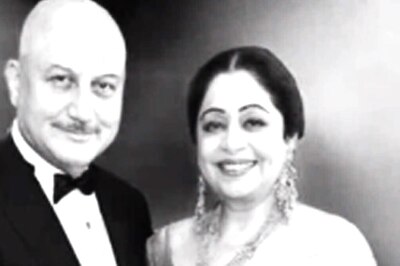
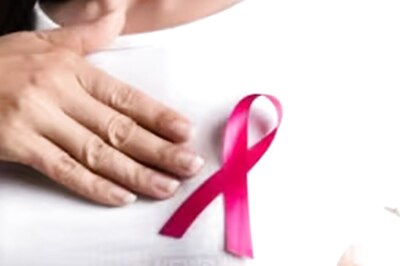
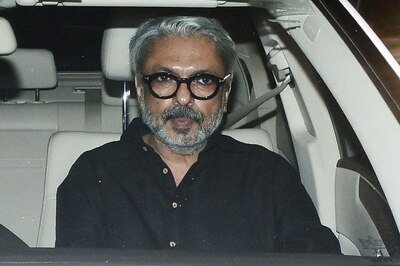



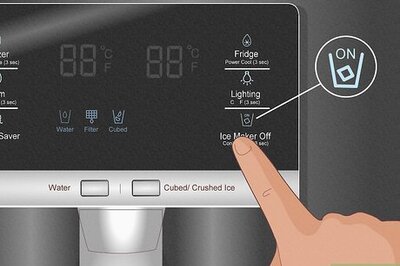
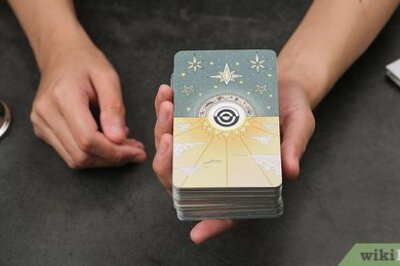
Comments
0 comment